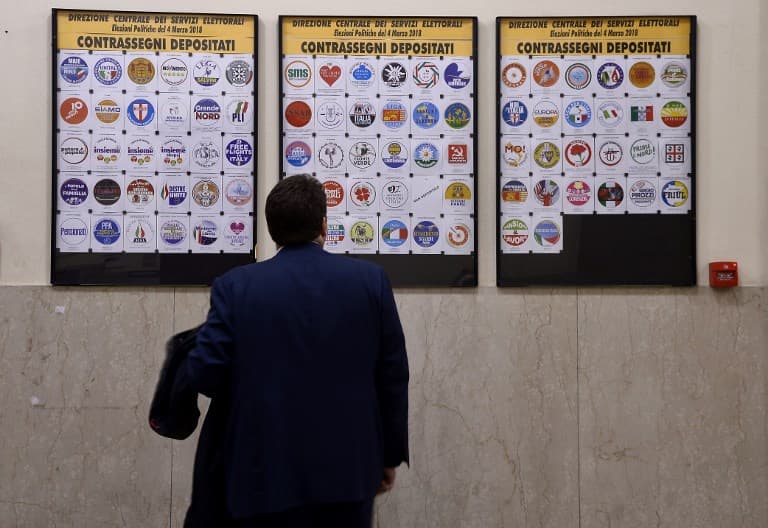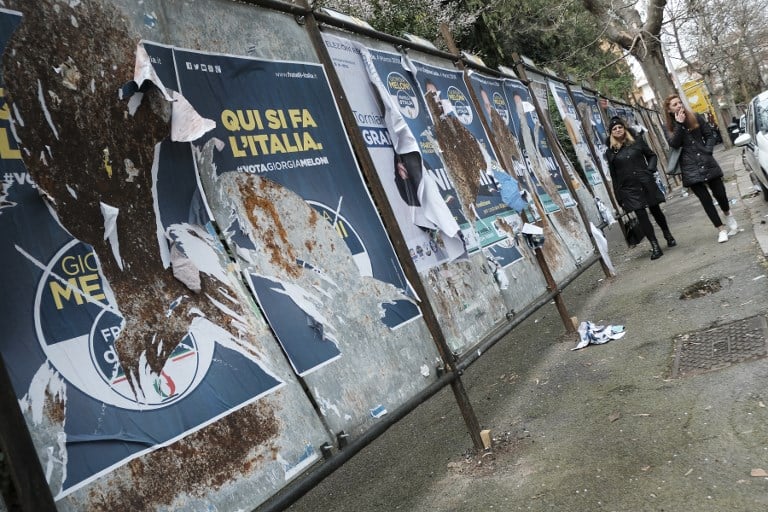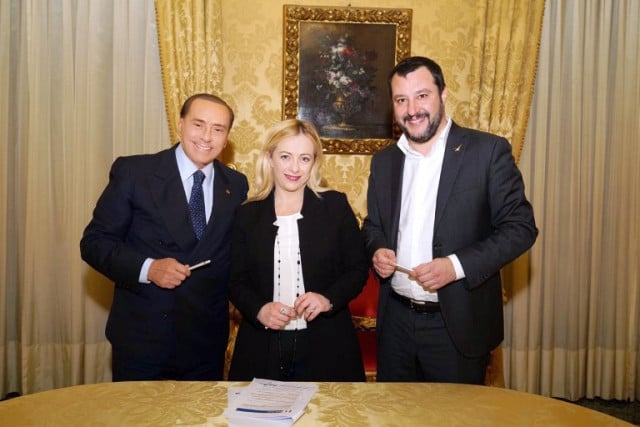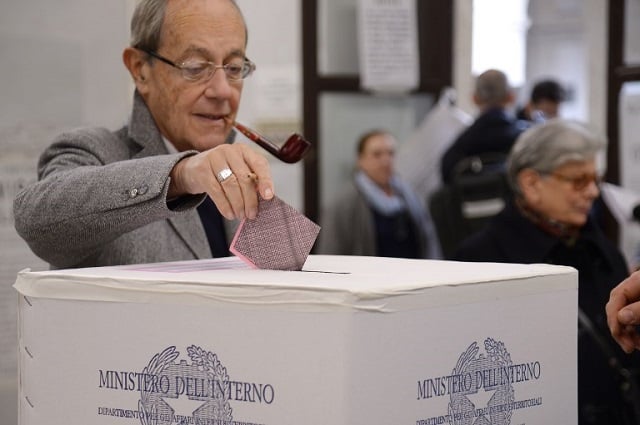The political Italian vocabulary you should know ahead of the 2018 election

Italian politics is hard to follow even for those with a lifetime's experience of the political system and fluency in the language. For foreigners or expats, it can be a nightmare, but The Local's guide takes you through the words and phrases you need to know ahead of the March 4th election.
The basics
L'elezione is 'the election', but Italians use the plural form (le elezioni) for general elections, because voters will be choosing representatives in both the Upper and Lower Houses of Parliament.
The names for the two parts of parliament are la Camera dei Deputati (Chamber of Deputies - the Lower House) and il Senato della Repubblica (the Senate of the Republic - the Upper House).
The members of each house are known as deputati and senatori, so an Italian 'deputato' is roughly equivalent to an MP (in the British parliamentary system) or 'elected representative' rather than 'deputy'. There are also a small numbers of senators for life (senatori a vita) who are not voted but are appointed, including former Italian presidents and others recognized for "outstanding merit" in civil society.
Today in Italian politics: Keep up-to-date with our daily political recaps here

Photo: Andreas Solaro/AFP
How it works
Because the Italians like to keep things interesting (read: confusing), this year's election will take place with a never before tested electoral law (legge elettorale). It's called 'Rosatellum', taking its name from Ettore Rosato, who leads the Democratic Party in the Lower House and drafted an early version of the law. This replaced an old electoral law, which was called 'Italicum', and was only valid for the Chamber of Deputies.
The system is anything but simple: it's a mixed voting system with some seats allocated proportionally (using 'un sistema proporzionale') and the others using first-past-the-post (uninominale secco). Another key bit of vocab is the 'soglia di sbarramento' or 'election threshold': the minimum share of the vote every party and coalition must achieve in order to get any seats.
The contenders
The four main political parties (partiti politici) in 2018's election are: the ruling Democratic Party (il Partito Democratico), Silvio Berlusconi's Forza Italia (this means 'go Italy' or 'forward Italy' but is generally not translated into English), Berlusconi's junior ally the Northern League (la Lega Nord -- though they've scrapped the 'nord' in their official logo to appeal to a wider range of voters) and the Five Star Movement (il Movimento Cinque Stelline or il M5S). The Brothers of Italy (Fratelli d'Italia) led by Giorgia Meloni are also part of Berlusconi's right-wing coalition.

Berlusconi, Meloni, and Salvini. Photo: Livio Anticoli/AFP
But there are also lots of smaller parties, which you might hear referred to as 'i partiti minori'. The large number of parties, and the way the electoral law is set up, favours coalitions (le coalizioni). The two big ones are 'il centrodestra', Silvio Berlusconi's centre-right coalition, and 'il centrosinistra', the centre-left coalition which includes the Democratic Party and three smaller leftwing groups.
According to the opinion polls (i sondaggi), there's unlikely to be a clear-cut winner, which means post-election negotiations and a strong possibility of a hung parliament (un parlamento sospeso) and possibly a grand coalition (una grande coalizione or le larghe intese).
Voting Day
March 4th is voting day (il giorno di voto), when Italy's voters (votanti) will head to the polling booth (la cabina elettorale) and fill out their ballot paper (la scheda elettorale) before putting it in the ballot box (le urne).
Alternatively, they might choose to vote with their feet (votare con i piedi) and stay at home. Abstaining from voting (astensionismo) is becoming increasingly common in Italy.

File photo of an Italian voter: Filippo Monteforte/AFP
Results
After the votes have been counted, we'll first get an exit poll (this one's easy -- 'gli exit poll') and eventually an overall result.
That could be a landslide victory (una vittoria schiacciante), or one coalition or party might win by a narrow margin (di stretta misura). Alternatively, the country could be left with no conclusive result and un parlamento sospeso (hung parliament or literally 'suspended parliament').
That would open the door to several possibilities: a grand coalition (una grande coalizione or un governo di larghe intese) made up of several different parties; or a temporary/caretaker government (un governo ad interim) while the country prepares to go back to the polls and do it all over again...
READ ALSO:
Comments
See Also
The basics
L'elezione is 'the election', but Italians use the plural form (le elezioni) for general elections, because voters will be choosing representatives in both the Upper and Lower Houses of Parliament.
The names for the two parts of parliament are la Camera dei Deputati (Chamber of Deputies - the Lower House) and il Senato della Repubblica (the Senate of the Republic - the Upper House).
The members of each house are known as deputati and senatori, so an Italian 'deputato' is roughly equivalent to an MP (in the British parliamentary system) or 'elected representative' rather than 'deputy'. There are also a small numbers of senators for life (senatori a vita) who are not voted but are appointed, including former Italian presidents and others recognized for "outstanding merit" in civil society.
Today in Italian politics: Keep up-to-date with our daily political recaps here

Photo: Andreas Solaro/AFP
How it works
Because the Italians like to keep things interesting (read: confusing), this year's election will take place with a never before tested electoral law (legge elettorale). It's called 'Rosatellum', taking its name from Ettore Rosato, who leads the Democratic Party in the Lower House and drafted an early version of the law. This replaced an old electoral law, which was called 'Italicum', and was only valid for the Chamber of Deputies.
The system is anything but simple: it's a mixed voting system with some seats allocated proportionally (using 'un sistema proporzionale') and the others using first-past-the-post (uninominale secco). Another key bit of vocab is the 'soglia di sbarramento' or 'election threshold': the minimum share of the vote every party and coalition must achieve in order to get any seats.
The contenders
The four main political parties (partiti politici) in 2018's election are: the ruling Democratic Party (il Partito Democratico), Silvio Berlusconi's Forza Italia (this means 'go Italy' or 'forward Italy' but is generally not translated into English), Berlusconi's junior ally the Northern League (la Lega Nord -- though they've scrapped the 'nord' in their official logo to appeal to a wider range of voters) and the Five Star Movement (il Movimento Cinque Stelline or il M5S). The Brothers of Italy (Fratelli d'Italia) led by Giorgia Meloni are also part of Berlusconi's right-wing coalition.

Berlusconi, Meloni, and Salvini. Photo: Livio Anticoli/AFP
But there are also lots of smaller parties, which you might hear referred to as 'i partiti minori'. The large number of parties, and the way the electoral law is set up, favours coalitions (le coalizioni). The two big ones are 'il centrodestra', Silvio Berlusconi's centre-right coalition, and 'il centrosinistra', the centre-left coalition which includes the Democratic Party and three smaller leftwing groups.
According to the opinion polls (i sondaggi), there's unlikely to be a clear-cut winner, which means post-election negotiations and a strong possibility of a hung parliament (un parlamento sospeso) and possibly a grand coalition (una grande coalizione or le larghe intese).
Voting Day
March 4th is voting day (il giorno di voto), when Italy's voters (votanti) will head to the polling booth (la cabina elettorale) and fill out their ballot paper (la scheda elettorale) before putting it in the ballot box (le urne).
Alternatively, they might choose to vote with their feet (votare con i piedi) and stay at home. Abstaining from voting (astensionismo) is becoming increasingly common in Italy.

File photo of an Italian voter: Filippo Monteforte/AFP
Results
After the votes have been counted, we'll first get an exit poll (this one's easy -- 'gli exit poll') and eventually an overall result.
That could be a landslide victory (una vittoria schiacciante), or one coalition or party might win by a narrow margin (di stretta misura). Alternatively, the country could be left with no conclusive result and un parlamento sospeso (hung parliament or literally 'suspended parliament').
That would open the door to several possibilities: a grand coalition (una grande coalizione or un governo di larghe intese) made up of several different parties; or a temporary/caretaker government (un governo ad interim) while the country prepares to go back to the polls and do it all over again...
Join the conversation in our comments section below. Share your own views and experience and if you have a question or suggestion for our journalists then email us at [email protected].
Please keep comments civil, constructive and on topic – and make sure to read our terms of use before getting involved.
Please log in here to leave a comment.